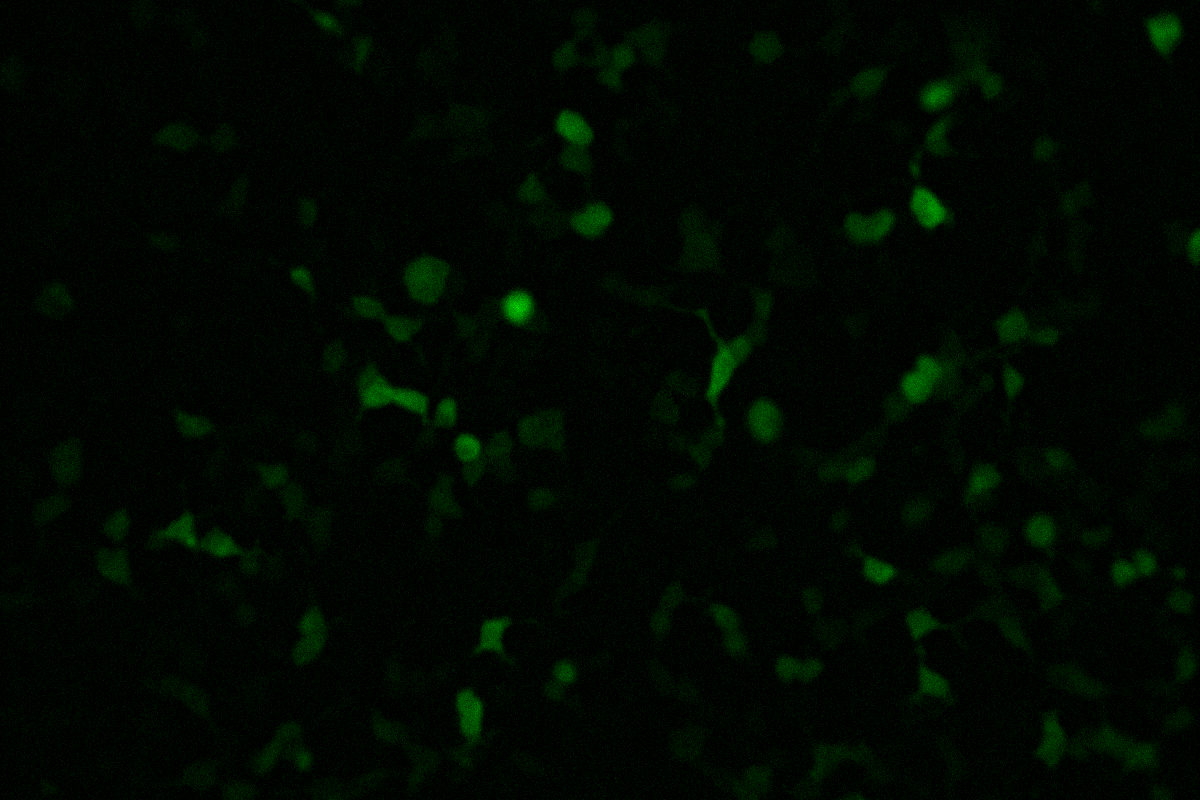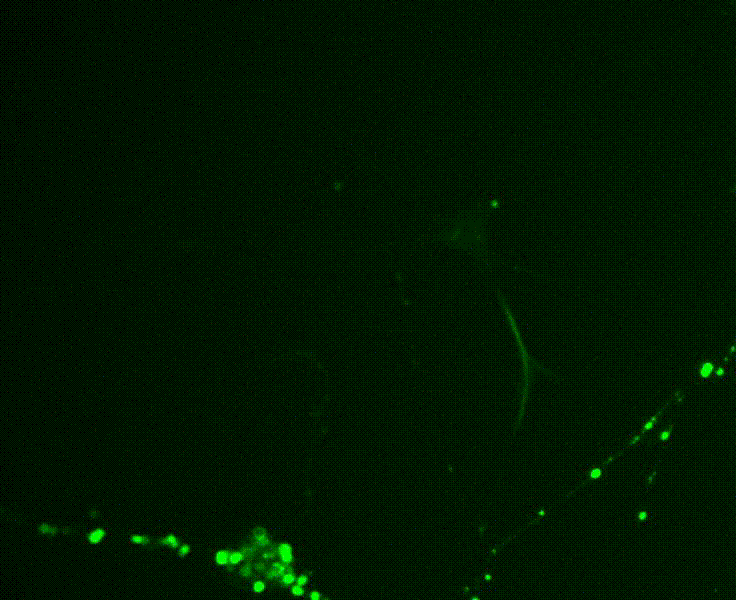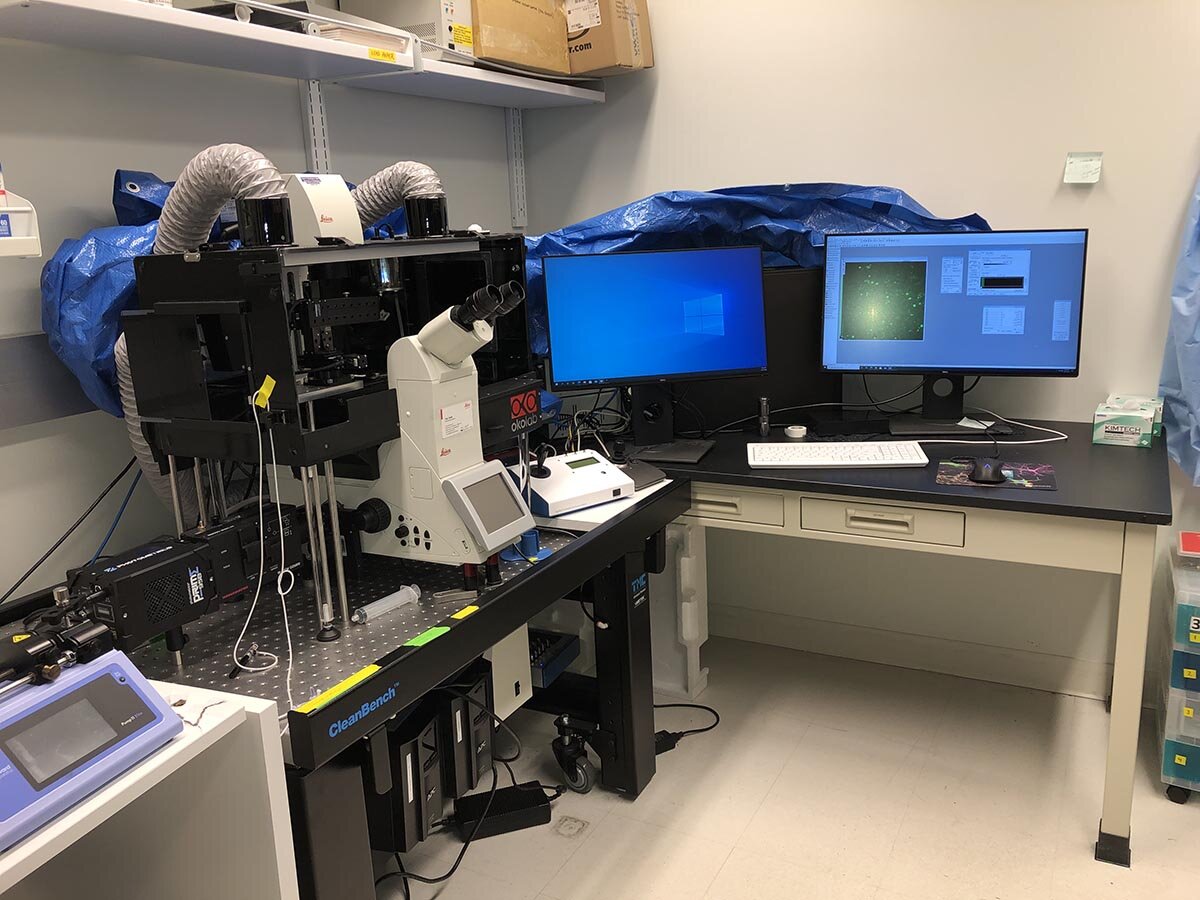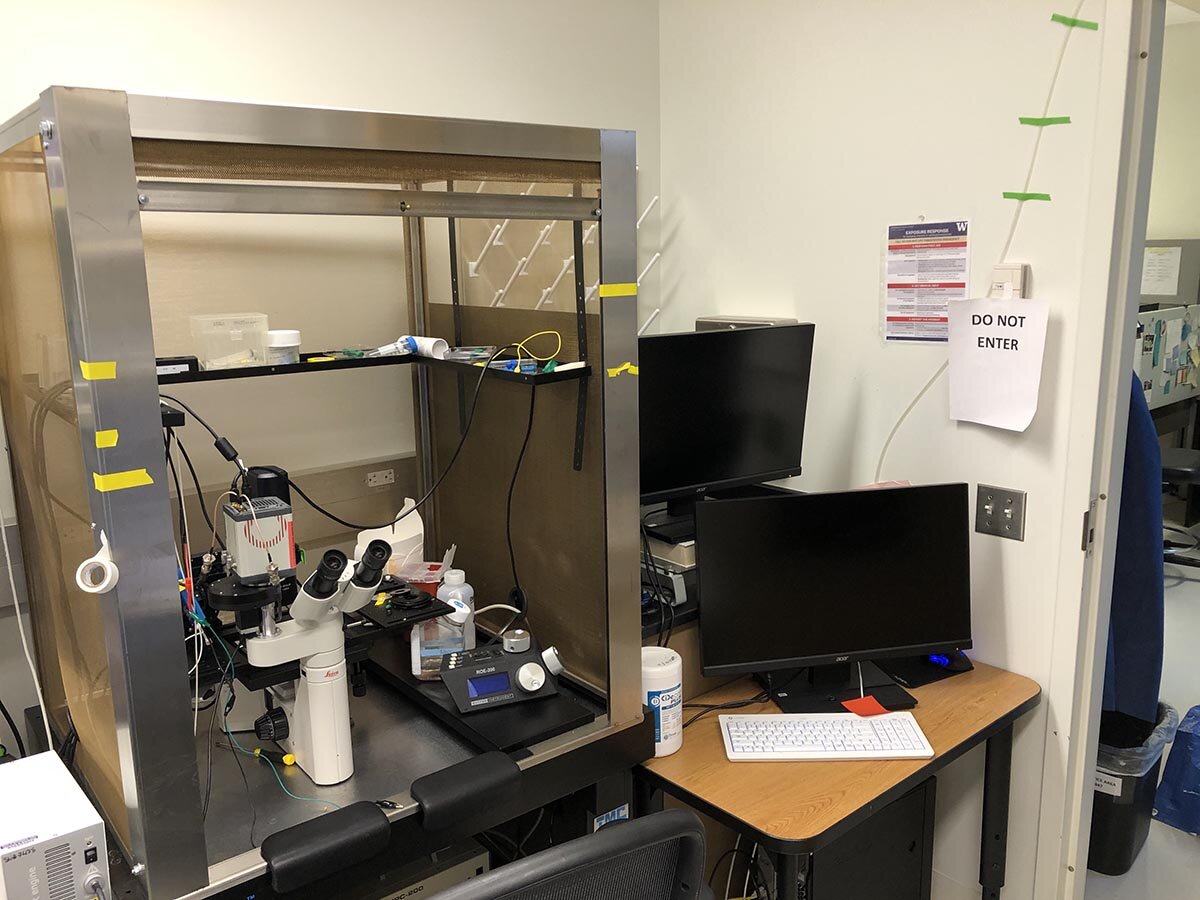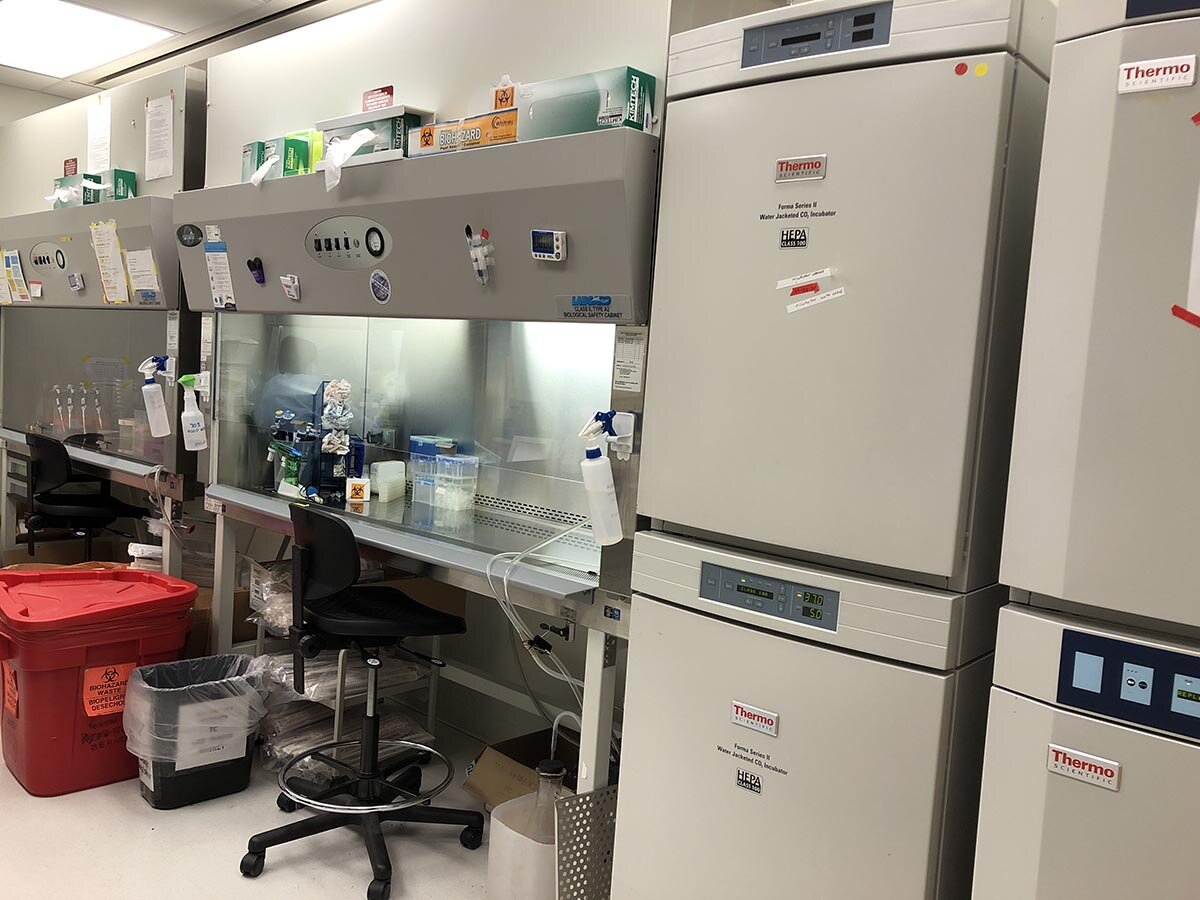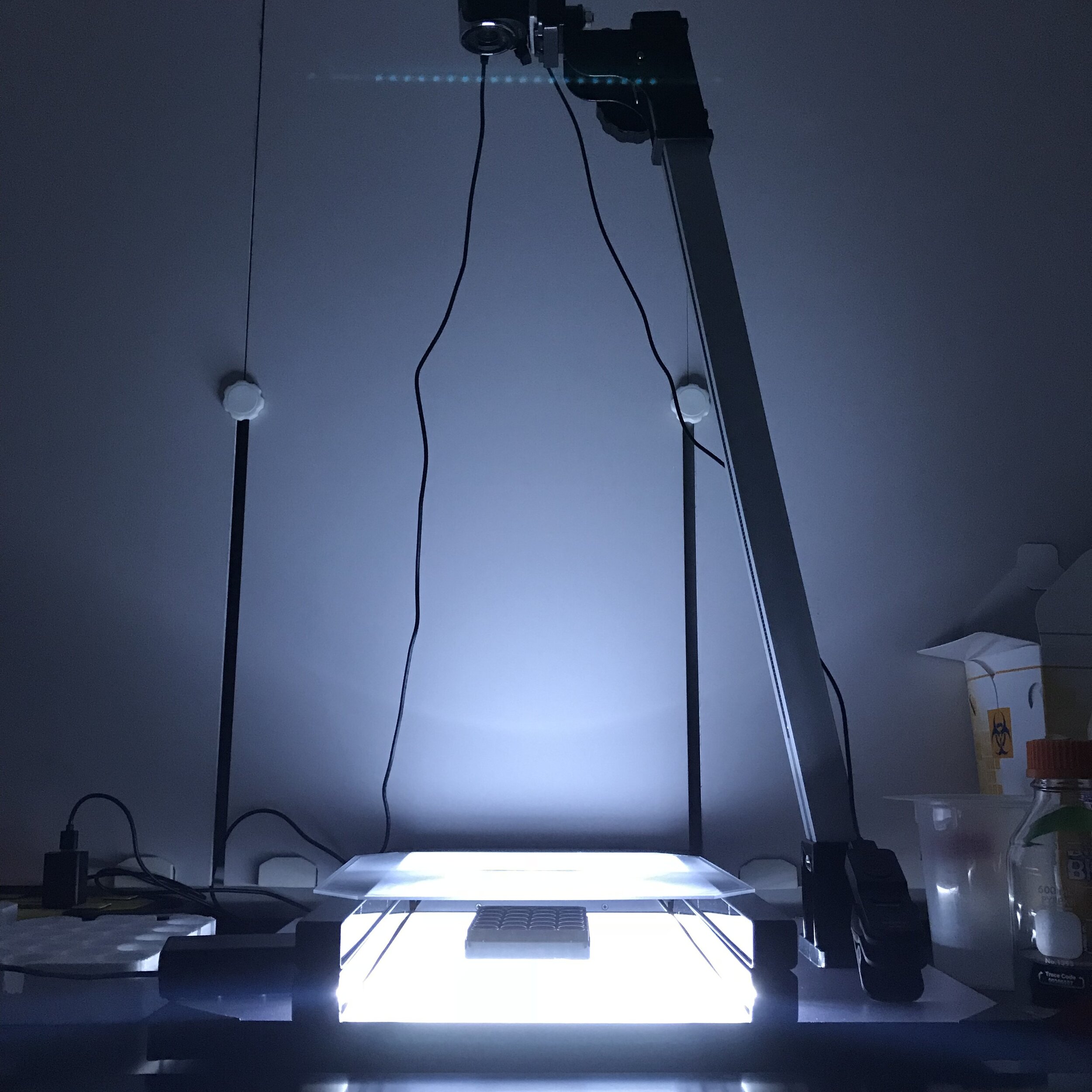We are a molecular design lab which develops fluorescent biosensors for detecting biochemical signals in neuronal networks in real time. Our goal is to monitor the activity of neurotransmitter, neuromodulators, hormones, ions and intracellular signaling molecules in live tissue and behaving animals at high spatial and temporal resolution. These sensors provide accurate, multidimensional information about information processing in neurons and neuronal networks. We aim to use these tools to identify impaired network dynamics in animal models for neurological disorders which will close critical knowledge gaps in our understanding of diseases such as autism and epilepsy. One big advantage is that these sensors are genetically encoded proteins which means they can be expressed in virtually any cell type by using virus or plasmid DNA. Thus, they are universally applicable and we seek to expand applications into other cell types such as cardiac, pancreatic and stem cells.
One of our in vivo test systems for sensor and optogenetic actuators are zebrafish. We use LED arrays for stimulation of channelrhodopsins in developing zebrafish brains. Subsequently, we can monitor stereotypical behaviors in juvenile and adult fish that are indicative for altered brain physiology. We also utilize zebrafish for imaging the dynamic activity of neuronal signaling in live animals.
